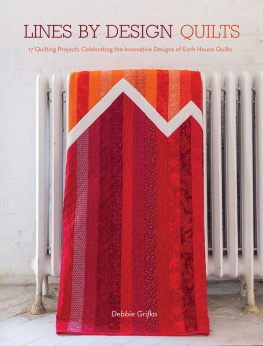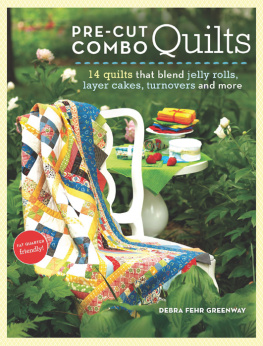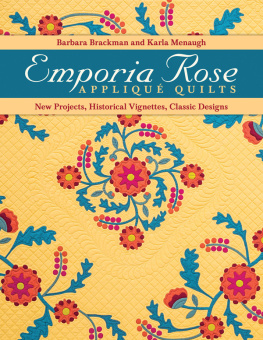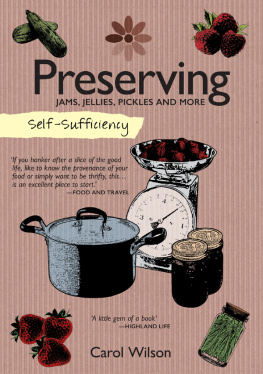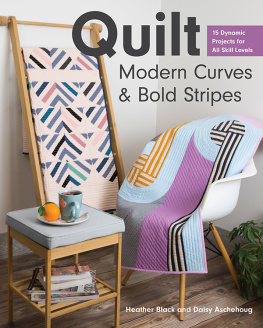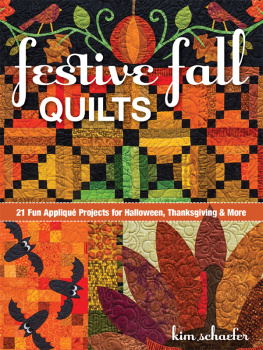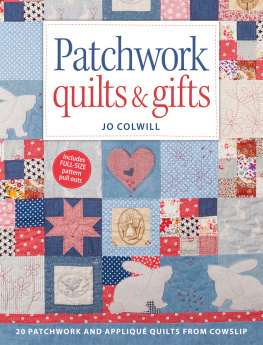Contents
Guide
Lines by Design Quilts
17 Projects Featuring the Innovative Designs of Esch House Quilts
Debbie Grifka

CINCINNATI, OHIO

Dedication
For Mike, whose unwavering faith that I can do anything I set my mind to keeps me going when I'm not sure I can. All my love, Debbie
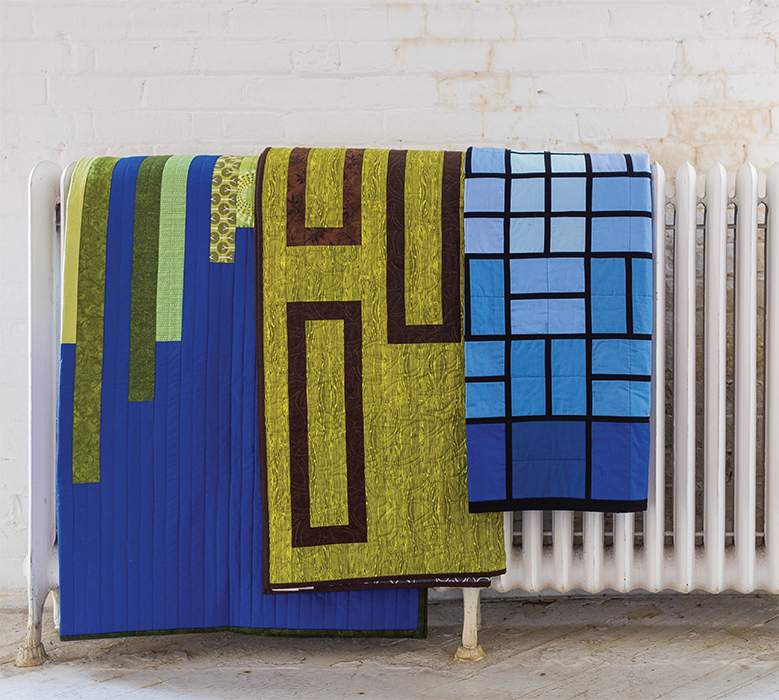
Contents
Chapter 1
Tools and Techniques
Chapter 2
Pure Lines
Chapter 3
Squares and Rectangles
Chapter 4
Diamonds and Hexagons
Chapter 5
Circles and Curves
Chapter 6
Pictorial
Introduction
When Im making a quilt, Im totally immersed in the process. I forget the details of my everyday life. The designs, the colors and the textures speak to me and we have such fun conversations. Im happiest when I create every day.
Ive been sewing for as long as I can remember. I got my first sewing machine for Christmas when I was seven and began to sew regularly at about twelve or thirteen. Mostly I made tops and skirts for myself, although I also made some full-length skirts for my mother and many of the dresses for our cheerleading team in junior high. I continued making clothes through high school (not so much during college), my early working years and my pregnancies, but I eventually started thinking about quilts, too.
I didnt grow up with any quilts or know anyone who made them. Perhaps it was the 1976 United States Bicentennial celebration that brought them to my attention. Quilts had fascinated and intrigued me for many years before I finally made one.
I was lucky enough to see the Faith and Stephen Brown exhibit of Amish quilts in 2000. Those quilts spoke to my heart. The stunning simplicity of design, the depth of the colors and the beautiful texture of the quilting left me in awe. I did not leave that exhibit thinking that I must make a quilt. In fact, I dont think it occurred to me that I could make an Amish quilt. Finally, in 2002, I began my first quilt and I havent stopped making them since.
Ive completely fallen in love with the process of dreaming, designing and making. The shapes and the colors call to me. I get so excited by all the ideas in my head, I sometimes think, If only my hands could work as quickly as my brain. But that makes it sound as if I want to rush the process, and it also minimizes the pleasure I take in the making. Im totally at peace with lots of stitching to do and a good audiobook to keep me company.
So, why lines? Ive always loved clean lines in architecture, furniture and clothes. Im drawn to anything with strong graphic impact that distills a shape to its essence. Lines convey an idea in as few words as possible, letting others fill in the details with their own imaginations. Lines offer unlimited potential from bold, straight lines to lush curves and lines that draw pictures.
Whether you make the projects in this book exactly as they appear here or use them as jumping off points for your own exploration of line, I wish you much joy and peace in the making!
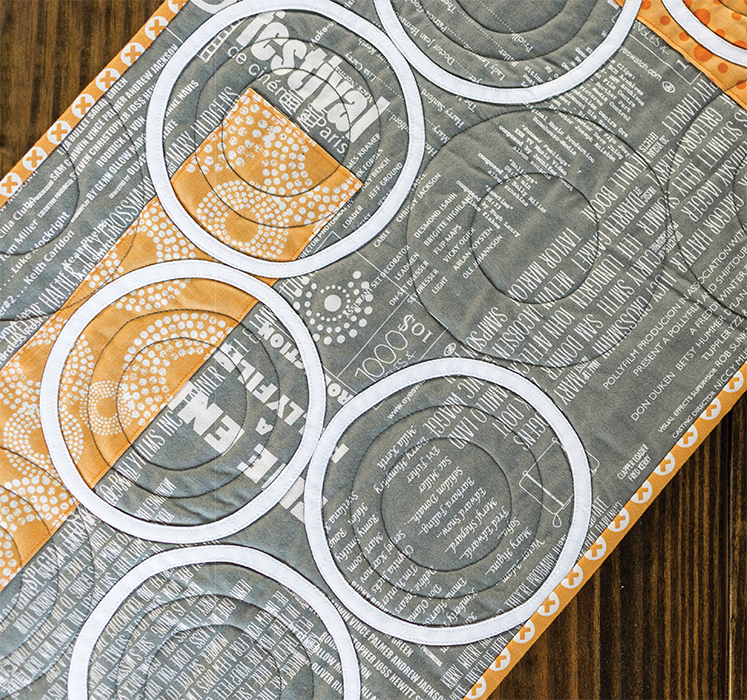
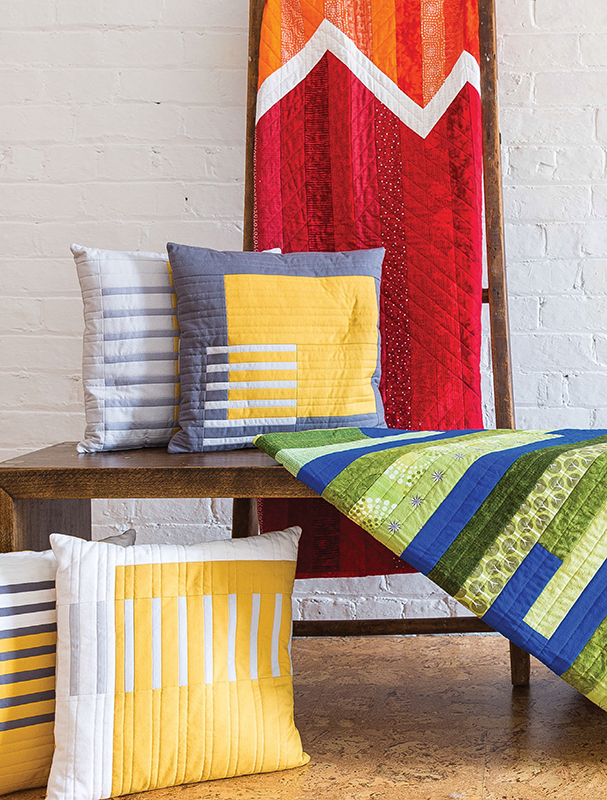

Chapter 1
Tools and Techniques
Lots of wonderful and amazing tools are available to help make your quilting life easier. If you are just getting started or, like me, arent much of a gadget junkie, keeping it simple with just the basic necessities is a great way to go. You can always add to your toolbox later.
This chapter introduces the necessary tools for quilting as well as some of the basic techniques youll use to make the quilts in this book.
Tools and Supplies
Sewing Machine, Needles and Thread
A good sewing machine is your most important tool. However, it doesnt have to be fancy or new. I sewed on a thirty-year-old Kenmore eight-stitch machine for the first ten years of my quilting life. In 2012, I bought a Janome Horizon 7700. I love my new machine and the things it can do that the old one couldnt, but I made a lot of great quilts on that old one.
The feet I use the most are the utility foot (the basic one that came with the machine), the 14" (6mm) foot, the open-toed appliqu foot, and the walking foot.
I buy two different sizes of needles for my machine70 and 80 Microtex sharps. I use the 70s when I piece or appliqu and the 80s when Im quilting.
Cotton thread is my thread of choice for both piecing and quilting, although I occasionally use polyester if I cant find the color I want in cotton. I usually use Aurifil or Gutermann. Gutermann is readily available in lots of colors at nearby stores and Aurifil 50 weight is nice and fine, and that lets me put lots on my bobbin and helps keep my seams flat. My machine also likes both of these threads. There are some machines that dont do well with certain brands, so use what works.
Cutting Tools
Rotary cutting tools are a must-have for quilting these days. Their speed and accuracy cant be beat! I use a 24" 36" (61cm 91.4cm) mat and have five rulers that I use almost daily. I have a 612" 2412" (16.5cm 62.2cm), a 312" 1212" (8.9cm 31.8cm), and three square rulers that are 1212" (31.8cm), 812" (21.6cm) and 412" (11.4cm) square. I use my 45mm rotary cutter most of the time, but I like to use a 60mm cutter when Im trimming my quilts before binding or on the rare occasion when Im cutting a lot of layers.
I have three pairs of scissors one for paper, one pair of larger shears (4" [10.2cm] blades) and one pair of medium-sized scissors (2" [5.1cm] blades). I also have a smaller pair that I keep with my handwork kit.
Thimbles
I love my thimble! I have a Roxanne open sided thimble that I bought not long after I started quilting. I use it whenever I do any handwork, including sewing down a binding. In fact, I never hand sew without it. Some people arent able to adjust to the feel of a thimble, but mine felt like part of me as soon as I started using it. A good thimble can be hard to find, so I feel very lucky that I love mine.
Marking Pencils
So many kinds of marking pencils are on the market; ask people what they like and why, and see if any of their suggestions work for you. My favorite is the Fons & Porter washable graphite pencil. I use it for marking on appliqu and sometimes for marking quilting lines, as well. It sharpens well, stays sharp and washes out like it says it does. Testing a new pencil before using it in your project is always a good idea.
Other Tools
Other tools youll need are a good iron, a seam ripper, a tape measure and some pins. Bias tape makers, painters tape, self-threading needles and starch or a starch substitute are useful. I use painters tape for taping my quilt backing down when Im basting and for marking quilting lines on smaller projects. Self-threading needles are a lifesaver when burying threads on the back of your project. Starch or a starch substitute helps keep your cutting and piecing nice and crisp.

